What To Eat
TO LOSE WEIGHT
There’s no getting around it — if you want to lose weight, your nutrition game needs to be on point. As the saying goes, you can’t outrun a bad diet.
But, there’s nothing worse than suffering through a diet that makes you miserable — especially when you still don’t see the results you want. Many fad diets are based on rules that are easy to memorize — No starchy carbs! Fast for 16 hours every day! — but are impossible to sustain.
BODi’S ULTIMATE GUIDE TO WEIGHT LOSS: CHAPTER 4
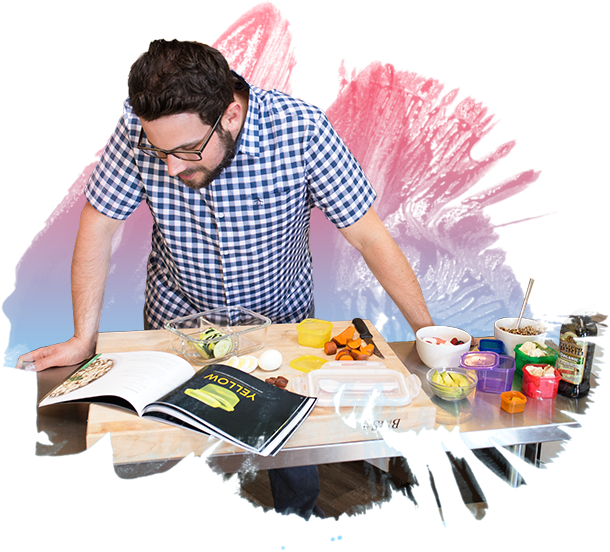
Eating healthy isn’t supposed to be a temporary blip. If you want to lose weight and keep it off, it takes commitment.
If that sounds daunting, it’s probably because you’re used to diets that kind of suck. But they don’t have to. Eating healthy isn’t about swearing off your favorite foods and nibbling on kale leaves all day. It’s about learning to fuel your body the right way and understand how to eat so you can lose weight without feeling deprived.
One of the most important lessons you can learn from losing weight successfully is how to eat healthfully. For the rest of your life.
We favor nutritionally balanced, long-term approaches to weight loss, but the truth of the matter is that counting calories, calculating macros, monitoring portion sizes, or even cleansing may or may not help you lose weight for a variety of reasons, many of which have to do with sustainability.
So, we’re not going to provide you with a list of 25 foods to eat that are “good” for weight loss. If that’s what you’re looking for, check out the detailed recommended food and beverage lists in the BODi Portion Fix Eating Plan or any BODi program nutrition guide.
But keep in mind that these are just places to start your healthy eating education. We want to drive home the facts that it’s your weight to lose, it’s your preferences, and it’s your life that should help guide you to what you should eat — not only to lose weight, but also to live a more vivacious life.
This isn’t to say that you won’t need to retrain your palate to accept whole foods without much adornment (ie., lots of added salt, sugar, and unhealthy fats), or that you won’t need to sacrifice the richness of some of your favorite comfort foods (we’re looking at you, mac and cheese) for healthier, slimmed-down versions, or that you won’t need to trim back on portion sizes. You will likely need to do all of these things in order to lose weight.
But, the key mindset to embrace is that you do have choices. You ultimately get to determine what will and won’t go into your weekly meal plans. What you eat to lose weight shouldn’t be all that different from what you eat to maintain your health after you shed the excess pounds. So, yes, you’ll likely need to cut calories to lose weight, but you’ll also need to learn how to eat differently to maintain your results.
No matter which way you prefer to cut calories, you should focus on improving the quality of the calories you do ingest first and foremost. We’ve reduced it to three simple steps you can start today to maximize the calories you do consume when you want to lose weight.
What to Eat
TO LOSE WEIGHT

BODi’S GUIDE TO WEIGHT LOSS: CH 4
There’s no getting around it — if you want to lose weight, your nutrition game needs to be on point. As the saying goes, you can’t outrun a bad diet.
But, there’s nothing worse than suffering through a diet that makes you miserable — especially when you still don’t see the results you want.
Many fad diets are based on rules that are easy to memorize — No starchy carbs! Fast for 16 hours every day! — but are impossible to sustain. Eating healthy isn’t supposed to be a temporary blip. If you want to lose weight and keep it off, it takes commitment.
If that sounds daunting, it’s probably because you’re used to diets that kind of suck. But they don’t have to. Eating healthy isn’t about swearing off your favorite foods and nibbling on kale leaves all day. It’s about learning to fuel your body the right way, so you can lose weight without feeling deprived.
One of the most important lessons you can learn from losing weight successfully is how to eat healthfully. For the rest of your life.
We favor nutritionally balanced, long-term approaches to weight loss, but the truth of the matter is that counting calories, calculating macros, monitoring portion sizes, or even cleansing may or may not help you lose weight for a variety of reasons, many of which have to do with sustainability.
So, we’re not going to provide you with a list of 25 foods to eat that are “good” for weight loss. If that’s what you’re looking for, check out the detailed recommended food and beverage lists in the BODi Portion Fix Eating Plan or any BODi program nutrition guide.
But keep in mind that these are just places to start your healthy eating education. We want to drive home the facts that it’s your weight to lose, it’s your preferences, and it’s your life that should help guide you to what you should eat — not only to lose weight, but also to live a more vivacious life.
This isn’t to say that you won’t need to retrain your palate to accept whole foods without much adornment (ie., lots of added salt, sugar, and unhealthy fats), or that you won’t need to sacrifice the richness of some of your favorite comfort foods (we’re looking at you, mac and cheese) for healthier, slimmed-down versions, or that you won’t need to trim back on portion sizes. You will likely need to do all of these things in order to lose weight.
But, the key mindset to embrace is that you do have choices. You ultimately get to determine what will and won’t go into your weekly meal plans. What you eat to lose weight shouldn’t be all that different from what you eat to maintain your health after you shed the excess pounds. So, yes, you’ll likely need to cut calories to lose weight, but you’ll also need to learn how to eat differently to maintain your results.
No matter which way you prefer to cut calories, you should focus on improving the quality of the calories you do ingest first and foremost. We’ve reduced it to three simple steps you can start today to maximize the calories you do consume when you want to lose weight.
Can’t Lose Weight? | How to Start | Make it Easier | What to Eat | Weight Loss Workouts | Maintain My Weight Loss
3 STEPS TO
SHED POUNDS
and Eat Healthy
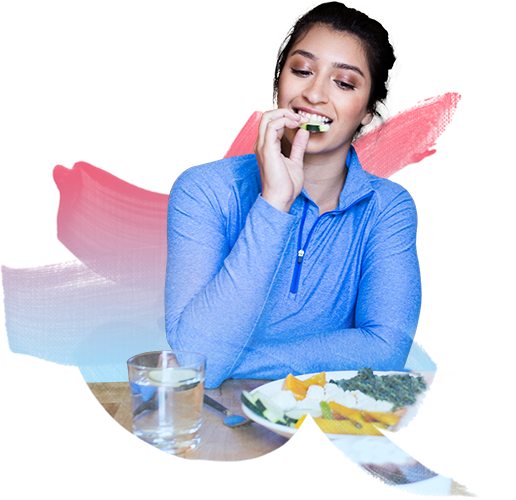
3 STEPS
TO SHED
POUNDS
and Eat Healthy
Drink water first and most.
When you’re trying to lose weight, cleaning up your diet also means watching what you drink. If done right, juices or shakes can be healthy weight-loss tools to enhance your nutrition plan, and Shakeology is a good way to assure you’re getting plenty of nutrients when eating at a deficit (or anytime!). Just try to keep your calories from beverages to a minimum (most Shakeology varieties contain about 160 calories per scoop).
Of course, water is calorie-free and incredibly good for you. BODi recommends you drink your body weight, divided by two, in ounces. So if you weigh 150 pounds — that would be 150 divided by 2, which equals 75. That’s 75 ounces of water you should be drinking every day. To a die-hard soda drinker (even a diet soda drinker) or someone who doesn’t think about hydration much at all, this might seem like a lot of extra trips to the bathroom. To make all that plain water more palatable, try:
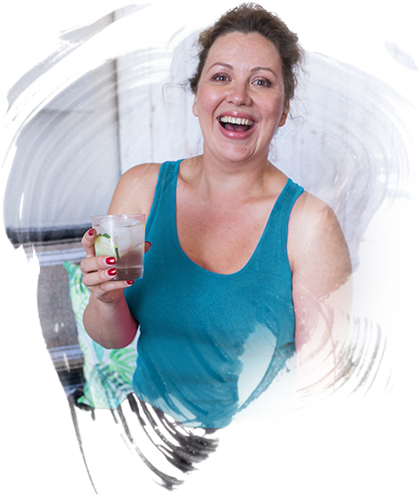
- Carbonated water. Try flavored varieties without added sugar, artificial sweeteners, and caloriesUnsweetened tea. Use caffeine-free tea if desired, and spruce up the flavor with lemon or lime slices, or muddled fruit
- Adding sliced citrus, cucumbers, strawberries, pineapples, or fresh mint leaves
- Adding citrus peels
- Flavoring with natural combos: ginger + cucumber + mint, or pineapples + orange peel, or strawberries + kiwi + basil.
Your mom may have told you as a 5-year-old not to fill your belly with liquid so you’d eat some dinner, but feel free to defy that rule as an adult. In fact, one study published in the journal Obesity asked 84 obese adults to either drink two cups of plain water before their main meals every day for three months, or to imagine the feeling of being full. Those who drank water before their meals lost about 2.6 pounds more than those who didn’t. These findings suggest that drinking water before your meals may be an easy way to take the edge off hunger, and possibly stop you from eating too much.

Drink water first and most.
When you’re trying to lose weight, cleaning up your diet also means watching what you drink. If done right, juices or shakes can be healthy weight-loss tools to enhance your nutrition plan, and Shakeology is a good way to assure you’re getting plenty of nutrients when eating at a deficit (or anytime!). Just try to keep your calories from beverages to a minimum (most Shakeology varieties contain about 160 calories per scoop).
Of course, water is calorie-free and incredibly good for you. BODi recommends you drink your body weight, divided by two, in ounces. So if you weigh 150 pounds — that would be 150 divided by 2, which equals 75. That’s 75 ounces of water you should be drinking every day. To a die-hard soda drinker (even a diet soda drinker) or someone who doesn’t think about hydration much at all, this might seem like a lot of extra trips to the bathroom. To make all that plain water more palatable, try:
- Carbonated water. Try flavored varieties without added sugar, artificial sweeteners, and caloriesUnsweetened tea. Use caffeine-free tea if desired, and spruce up the flavor with lemon or lime slices, or muddled fruit
- Adding sliced citrus, cucumbers, strawberries, pineapples, or fresh mint leaves
- Adding citrus peels
- Flavoring with natural combos: ginger + cucumber + mint, or pineapples + orange peel, or strawberries + kiwi + basil.
Your mom may have told you as a 5-year-old not to fill your belly with liquid so you’d eat some dinner, but feel free to defy that rule as an adult. In fact, one study published in the journal Obesity asked 84 obese adults to either drink two cups of plain water before their main meals every day for three months, or to imagine the feeling of being full. Those who drank water before their meals lost about 2.6 pounds more than those who didn’t. These findings suggest that drinking water before your meals may be an easy way to take the edge off hunger, and possibly stop you from eating too much.
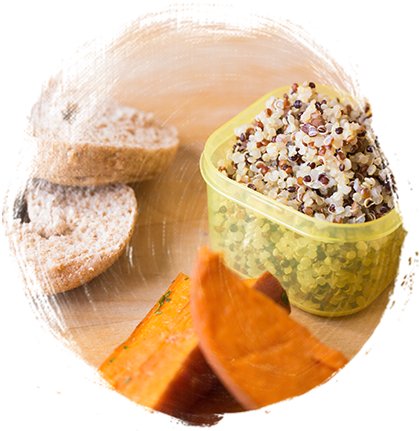
Replace refined, processed foods with whole ones.
It may seem obvious that in order to lose weight and eat healthier, you need to cut way back on fried foods, creamy casseroles, and sugary confections, but it may seem less obvious what to eat instead.
As much as possible, try to cut back on highly processed foods, such as frozen meals, packaged snacks, sugar-laden cereals, bottled sauces, meats with added preservatives, etc. Instead, choose whole foods, such as vegetables, fruits, raw nuts and seeds, lean proteins (ie., chicken, turkey, eggs, tempeh), healthy fats (ie., avocados, hummus, extra-virgin olive oil, nut butters), and whole grains (ie., oatmeal, barley, whole-grain bread, brown rice).
Whole foods provide nutrient-dense fuel that contribute to greater satiety (when compared to processed foods).
The naturally occurring fiber, water (in foods like fruits and vegetables), or protein in these foods can contribute to an increased feeling of satisfaction — often with less food (read: fewer calories).
Protein can help you feel satiated longer than carbohydrates or fat. This may be due to increased thermogenesis (the metabolic process of your body burning calories), which influences that physiological “I’m satisfied” feeling you have after consuming higher amounts of protein.
Fiber, a form of carbohydrate found in plants that humans lack the enzyme to digest, helps us feel fuller on fewer calories. A food diary analysis of successful MyFitnessPal (MFP) users (defined as those who came within five percent of their goal weights) revealed the faithful food trackers who came closest to their goals ate 30 percent more fiber. That may seem like a lot, but really the difference was only three grams per day more than other MFP users — the equivalent of having one small apple or swapping a traditional English muffin for a whole wheat one.

Replace refined, processed foods with whole ones.
It may seem obvious that in order to lose weight and eat healthier, you need to cut way back on fried foods, creamy casseroles, and sugary confections, but it may seem less obvious what to eat instead.
As much as possible, try to cut back on highly processed foods, such as frozen meals, packaged snacks, sugar-laden cereals, bottled sauces, meats with added preservatives, etc. Instead, choose whole foods, such as vegetables, fruits, raw nuts and seeds, lean proteins (ie., chicken, turkey, eggs, tempeh), healthy fats (ie., avocados, hummus, extra-virgin olive oil, nut butters), and whole grains (ie., oatmeal, barley, whole-grain bread, brown rice).
Whole foods provide nutrient-dense fuel that contribute to greater satiety (when compared to processed foods).
The naturally occurring fiber, water (in foods like fruits and vegetables), or protein in these foods can contribute to an increased feeling of satisfaction — often with less food (read: fewer calories).
Protein can help you feel satiated longer than carbohydrates or fat. This may be due to increased thermogenesis (the metabolic process of your body burning calories), which influences that physiological “I’m satisfied” feeling you have after consuming higher amounts of protein.
Fiber, a form of carbohydrate found in plants that humans lack the enzyme to digest, helps us feel fuller on fewer calories. A food diary analysis of successful MyFitnessPal (MFP) users (defined as those who came within five percent of their goal weights) revealed the faithful food trackers who came closest to their goals ate 30 percent more fiber. That may seem like a lot, but really the difference was only three grams per day more than other MFP users — the equivalent of having one small apple or swapping a traditional English muffin for a whole wheat one.
Add volume with vegetables.
Volumetrics is a way of eating that may help you feel satisfied by consuming foods with low calorie density, or less calories for any given amount. It’s essentially a fancy way of telling people to eat the majority of their calories from mostly vegetables and fruits.
Low calorie density foods such as apples are higher in fiber and water, so you’re able to eat more in volume for a similar amount of calories (compared to a higher calorie density food such as apple pie). There’s evidence to say that fiber helps you feel fuller faster, and keeps you satiated long after you eat. A small study did find that water incorporated into food (as in the case of soup) did help subjects eat less, but not if that same amount of water was served in a glass on the side.
One study confirms that when people eat foods low in energy density, their total daily calories are significantly less than when they eat foods high in energy density.
If you’re hoping that eating more whole foods will help you lose weight, you’ll want to eat these foods in lieu of processed foods, not in addition to them. Because, in the end, weight loss generally boils down to eating fewer calories.
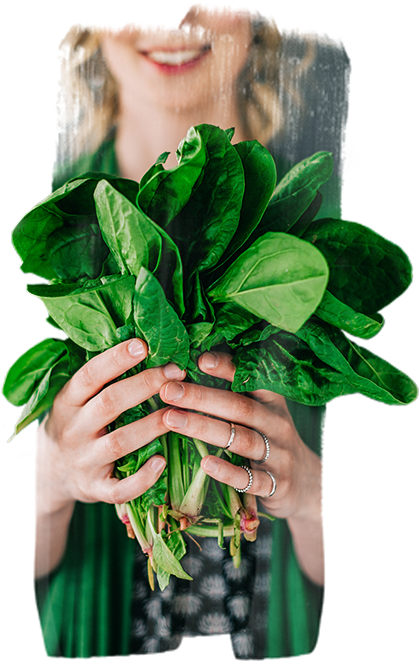

Add volume with vegetables.
Volumetrics is a way of eating that may help you feel satisfied by consuming foods with low calorie density, or less calories for any given amount. It’s essentially a fancy way of telling people to eat the majority of their calories from mostly vegetables and fruits.
Low calorie density foods such as apples are higher in fiber and water, so you’re able to eat more in volume for a similar amount of calories (compared to a higher calorie density food such as apple pie). There’s evidence to say that fiber helps you feel fuller faster, and keeps you satiated long after you eat. A small study did find that water incorporated into food (as in the case of soup) did help subjects eat less, but not if that same amount of water was served in a glass on the side.
One study confirms that when people eat foods low in energy density, their total daily calories are significantly less than when they eat foods high in energy density.
If you’re hoping that eating more whole foods will help you lose weight, you’ll want to eat these foods in lieu of processed foods, not in addition to them. Because, in the end, weight loss generally boils down to eating fewer calories.


